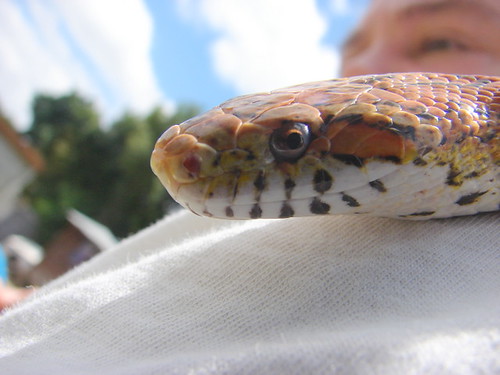
If you’re thinking about owning a snake for a pet, then you’ll need to read on about how to care for them. Snakes as pets are growing in popularity, but a lot of people don’t give enough consideration on the thought of owning one. Exotics are pets that don’t fit the normal definition of a pet, and any type of snake certainly doesn’t fit the typical pet of a dog, cat or fish, so learn about the basics of snake responsibility, and some medical issues of snakes.
The wild side applies to snakes, and there’s nothing wrong with owning one, but know what you’re getting into. There are poisonous, constrictor, and non-poisonous snakes. Everyone should seriously think about bringing a poisonous snake into his or her home. If you’ve got small children or other pets in your home, it’s not a good idea. Children are curious, and one accident can mean their life. Small pets like gerbils and rabbits can be killed if the snake escapes. Snakes can fit through holes and wiggle loose out of your hands in a snap; so think long and hard about buying one that’s poisonous. Constrictor snakes can be dangerous too because they can over power an adult that’s average in size very quickly. Experts say that to handle a constrictor, you’ll need experience, and depending on how big the snake is, two people should handle it. If your snake grows or is over five feet, get an experienced person to help you move it.
Good starter snakes are ones like the ball python. It’s a constrictor snake, but it’s one of the more docile ones. The supplies that you’ll need to get your snake started off right in your home isn’t all that much, but be prepared to pay in the first year, if everything goes right, around $1,000.00. A baby ball python costs on average about $75.00, and an average aquarium that will be large enough about $200.00. A heavy lock down top will run on average $50.00. Don’t skimp on a quality top, or you’ll find your snake gone. Next, purchase a good supply of 100-watt light bulbs, too. Your snake will need the warmth continually because it’s a reptile and cold blooded. You’ll probably see an increase in your electric bill of at least another $150.00 per year to keep it running.
When you buy your snake, pick up a quality water bowl, and a bowl for the snake to lounge and curl up in. Depending on the types and where you buy the bowls the price will vary, plan on spending at least another $25.00 for them a box make of wood that will fit its cage is a part of the package of owning a snake. Snakes need their rest, and will go into the box to cool off, or to sleep. Before you take your snake home, a quick stop at the vet’s office is a good idea because snakes can have parasites under their scales that cause infection, and there are other medical problems too. They can have mouth rot, blood poisoning, eye infections and even respiratory infections. Older snakes can develop benign or malignant tumors.
Snakes are creatures that need care just like any other, but people just don’t seem to consider that fact. Most think that if their snake doesn’t work out they can just go and give it to a zoo. Most zoos will not take any snake at all from the general public. They know the medical issues, and a lot of zoos are over crowded as it is. Also, they restock their own when they need to, and even if you want to give it to them for free, they won’t usually take it. Sadly, snakes are often abandoned, or they’re killed by their owners when they get too much to take care of. Food is another issue with owning a snake, and this is one factor that makes people give up on their snake. Snakes can be hard to feed; most like to kill their own, and will reject frozen dead bait. Boxes of frozen mice will run about $200.00 per year, and that’s if it’s a small to medium sized snake.
Owning a snake can be a fascinating adventure, but it’s a decision that needs to be made with extreme care. Remember, the snake that you take home is one of nature’s most complex creatures.
No comments:
Post a Comment